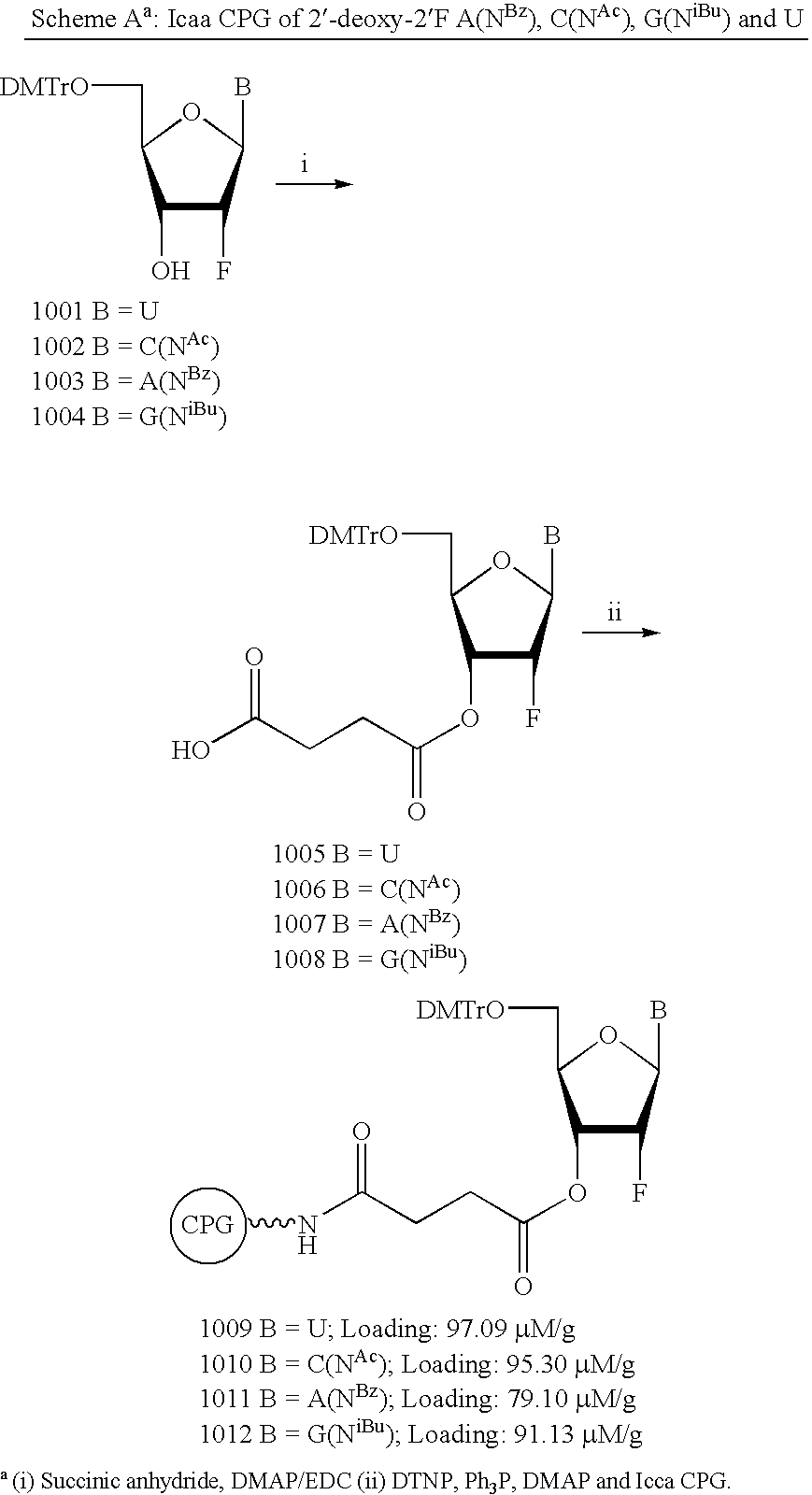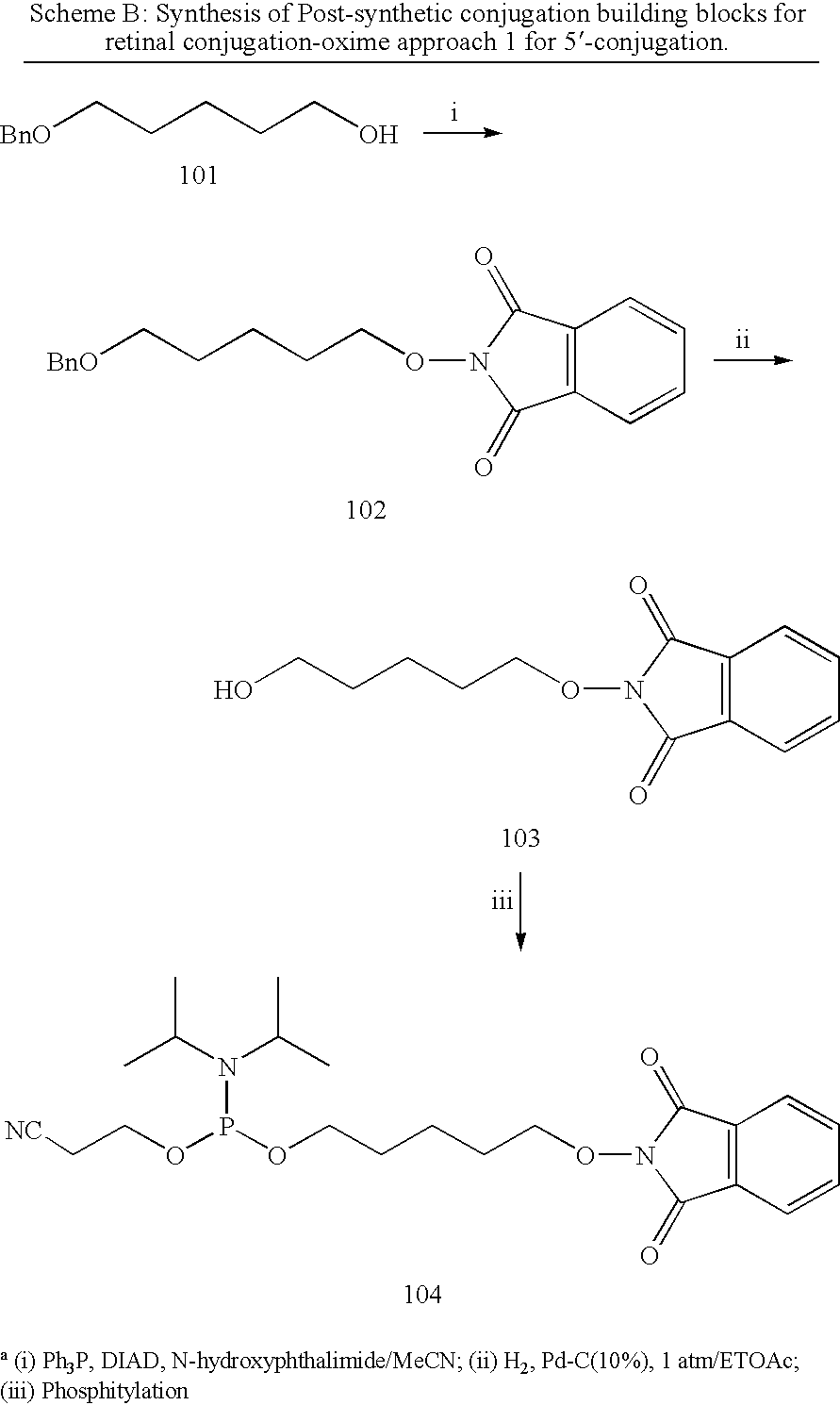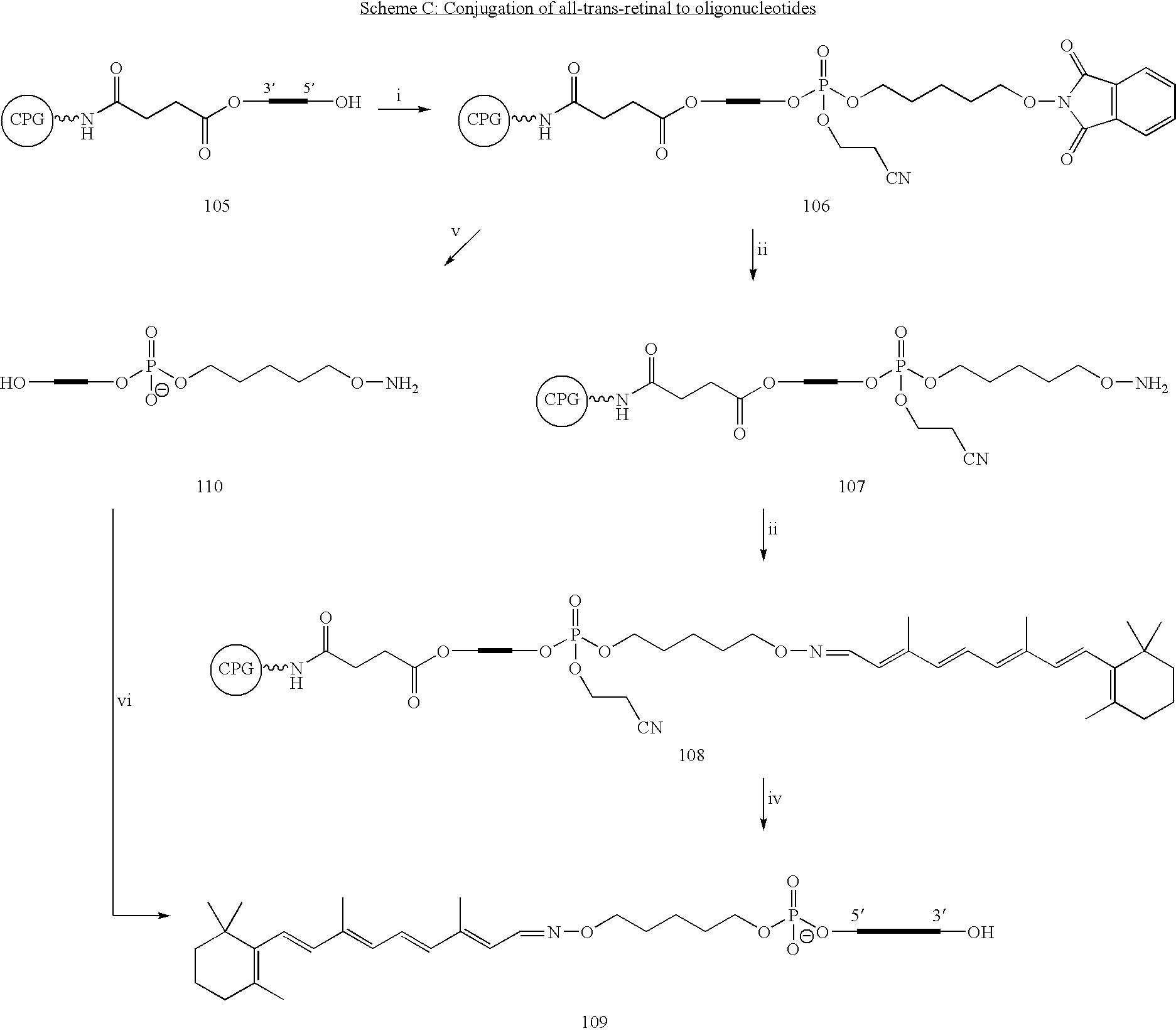iRNA agents targeting VEGF
a technology of vegf and irna agent, which is applied in the field of irna agents, can solve the problems of debilitating loss of vital central or detail vision, slow breakdown of cells, and increase in frequency of this disorder, so as to improve one or more properties of irna agents, increase specificity to target moieties, and increase resistance to degradation
- Summary
- Abstract
- Description
- Claims
- Application Information
AI Technical Summary
Benefits of technology
Problems solved by technology
Method used
Image
Examples
example 1
siRNA Design
[0224] Four hundred target sequences were identified within exons 1-5 of the VEGF-A121 mRNA sequence (See Table 1, SEQ ID NOs 2-401) and corresponding siRNAs targeting these subjected to a bioinformatics screen.
[0225] To ensure that the sequences were specific to VEGF sequence and not to sequences from any other genes, the target sequences were checked against the sequences in Genbank using the BLAST search engine provided by NCBI. The use of the BLAST algorithm is described in Altschul et al., J. Mol. Biol. 215:403, 1990; and Altschul and Gish, Meth. Enzymol. 266:460, 1996.
[0226] siRNAs were also prioritized for their ability to cross react with monkey, rat and human VEGF sequences.
[0227] Of these 400 potential target sequences 80 were selected for analysis by experimental screening in order to identify a small number of lead candidates. A total of 114 siRNA molecules were designed for these 80 target sequences 114 (Table 2).
example 2
Synthesis of the siRNA Oligonucleotides
[0228] RNA was synthesized on Expedite 8909, ABI 392 and ABI394 Synthesizers (Applied Biosystems, Applera Deutschland GmbH, Frankfurter Str. 129b, 64293 Darmstadt, Germany) at 1 μmole scale employing CPG solid support and Expedite RNA phosphoramidites (both from Proligo Biochemie GmbH, Georg-Hyken-Str.14, Hamburg, Germany). Ancillary reagents were obtained from Mallinckrodt Baker (Im Leuschnerpark 4:64347 Griesheim, Germany). Phosphorothioate linkages were introduced by replacement of the iodine oxidizer solution with a solution of the Beaucage reagent in acetonitrile (5% weight per volume).
[0229] Cleavage of the oligoribonucleotides from the solid support and base deprotection was accomplished with a 3:1 (v / v) mixture of methylamine (41%) in water and methylamine (33%) in ethanol. 2′-Desilylation was carried out according to established procedures (Wincott et al., Nucleic Acids Res. 23:2677-2684, 1995). Crude oligoribonucleotides were purifi...
example 3
Efficacy Screen of siRNAs
[0232] Using two efficacy screens, the VEGF siRNA were screened for their ability to become a lead candidate. Table 2 shows the relative efficiencies of some of the siRNAs in their ability to inhibit expression of an endogenous VEGF gene. In this process the number of candidate siRNAs was winnowed. Human HeLa or ARPE-19 (human retinal pigment epithelial cell line with differentiated properties (Dunn et al., Exp. Eye Res. 62: 155, 1996) were plated in 96-well plates (17,000 cells / well) in 100 μl 10% fetal bovine serum in Dulbecco's Modified Eagle Medium (DMEM). When the cells reached approximately 90% confluence (approximately 24 hours later) they were transfected with serial three-fold dilutions of siRNA starting at 20 nM 0.4 μl of transfection reagent Lipofectamine™ 2000 (Invitrogen Corporation, Carlsbad, Calif.) was used per well and transfections were performed according to the manufacturer's protocol. Namely, the siRNA: Lipofectamine™ 2000 complexes wer...
PUM
| Property | Measurement | Unit |
|---|---|---|
| Flow rate | aaaaa | aaaaa |
| pH | aaaaa | aaaaa |
| pH | aaaaa | aaaaa |
Abstract
Description
Claims
Application Information
 Login to View More
Login to View More - R&D
- Intellectual Property
- Life Sciences
- Materials
- Tech Scout
- Unparalleled Data Quality
- Higher Quality Content
- 60% Fewer Hallucinations
Browse by: Latest US Patents, China's latest patents, Technical Efficacy Thesaurus, Application Domain, Technology Topic, Popular Technical Reports.
© 2025 PatSnap. All rights reserved.Legal|Privacy policy|Modern Slavery Act Transparency Statement|Sitemap|About US| Contact US: help@patsnap.com



